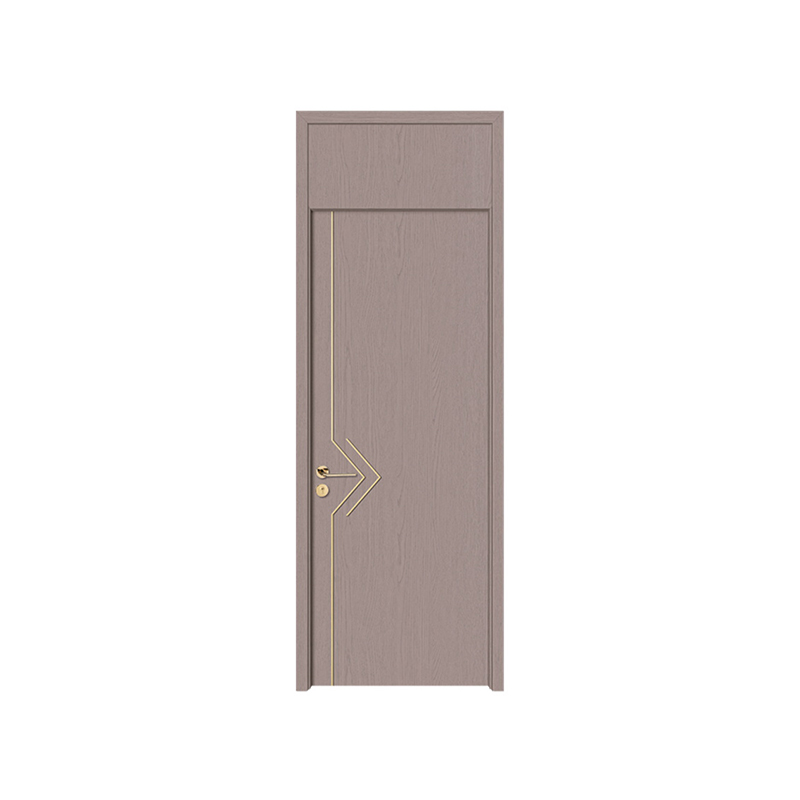We provide quality products and services to customers from all over the world.
How Do MDF Exterior Doors Compare to Solid Wood Doors in Terms of Durability?
When it comes to choosing an exterior door for your home, one of important factors to consider is durability. The door is your line of defense against the elements, and whether you're selecting an MDF exterior door or a solid wood door, you want to ensure that it can withstand the test of time. Both materials offer unique advantages and disadvantages when it comes to durability, and understanding the differences can help you make choice for your home.
MDF Exterior Door vs. Solid Wood Door
MDF exterior doors have become increasingly popular due to their versatility and cost-effectiveness. MDF (Medium-Density Fiberboard) is an engineered wood product made by compressing wood fibers and resin under heat and pressure. This results in a dense, smooth surface that can be shaped into various door styles, including MDF flat panel doors and MDF front doors. In contrast, solid wood doors are made from natural wood, typically hardwoods like oak, mahogany, or walnut, which offer a rich, organic aesthetic.

1. Resistance to Weathering
One of the key aspects of durability for MDF exterior doors is their resistance to weathering. Wood naturally reacts to humidity, heat, and moisture, and solid wood doors can expand, contract, and warp over time. This is especially true for solid wood doors used as exterior doors, where exposure to the elements can cause significant wear and tear. The porous nature of wood makes it more susceptible to moisture damage, cause swelling, cracking, or warping.
On the other hand, MDF exterior doors tend to be more stable in varying weather conditions. The manufacturing process of MDF ensures that it has a consistent density throughout, making it less prone to expansion or contraction due to humidity. However, MDF is not entirely immune to moisture, and if water gets into the seams or edges, it can cause the material to swell and degrade. To prevent this, MDF front doors and MDF flat panel doors are typically treated with a protective coating or sealant that helps to mitigate the effects of moisture. While MDF doors are generally more resistant to weathering than solid wood doors, they still require proper sealing to maintain their durability.
2. Strength and Impact Resistance
Solid wood doors are known for their natural strength and ability to withstand impact. A solid wood door provides a robust barrier against forced entry, making it a popular choice for security-conscious homeowners. The density and thickness of the wood, especially in hardwood options like oak or mahogany, make these doors incredibly durable. However, while solid wood doors may be less likely to dent or scratch easily, they are still vulnerable to impact, especially from sharp objects or force.
In comparison, MDF exterior doors are not as strong as solid wood doors when it comes to resisting impact. The density of MDF is lower than that of solid wood, which means MDF front doors are more likely to suffer dents or damage from forceful impacts. MDF flat panel doors, for instance, are smooth and lightweight, which makes them more prone to physical damage if not treated with care. Although MDF is not as durable in terms of impact resistance, it can still be an outstanding choice for those looking for a more affordable door that will hold up well under normal wear and tear.
3. Maintenance and Longevity
When comparing the longevity of MDF exterior doors to solid wood doors, the key difference lies in maintenance requirements. Solid wood doors require more regular maintenance, especially when used as exterior doors. They need to be periodically sanded, stained, or painted to protect the wood from the elements. If left untreated, a solid wood door can suffer from moisture damage, fading, and deterioration, which will reduce its lifespan.
On the other hand, MDF exterior doors require less maintenance. Due to their uniform surface and protective coatings, MDF front doors tend to maintain their appearance longer with minimal upkeep. They are less prone to warping or fading, and the smooth, factory-finished surface often remains intact for many years. However, if the door's finish is damaged or the protective coating begins to wear off, the MDF will need to be resealed or repainted to prevent moisture infiltration.
4. Insulation and Energy Efficiency
Energy efficiency is another important factor in the durability of both MDF exterior doors and solid wood doors. MDF exterior doors typically offer better insulation than solid wood doors because the manufacturing process of MDF creates a denser, more uniform material. This density helps to prevent air leaks and makes MDF front doors more effective at keeping heat in and cold out. Additionally, MDF doors can be fitted with foam cores, which further enhance their insulating properties.
Solid wood doors, while also offering good insulation, can have natural imgreations or gaps that may allow drafts to seep through. Over time, these gaps can cause energy loss and a reduction in the door's efficiency. Wood doors also tend to expand and contract with changes in temperature, which can create more gaps or cracks, negatively impacting their insulation.
Interested in cooperation or have questions?
![]() +86-13857003056
+86-13857003056
![]() No. 27 Lianhuashan Avenue, Jiangshan Economic Development, Jiangshan, Quzhou, Zhejiang, China
No. 27 Lianhuashan Avenue, Jiangshan Economic Development, Jiangshan, Quzhou, Zhejiang, China

 English
English русский
русский Français
Français Español
Español عربى
عربى
